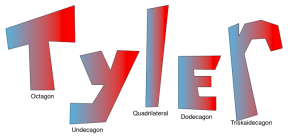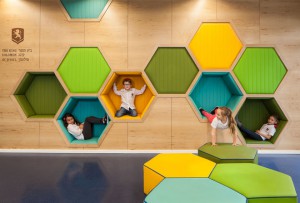.
.
 Welcome to the Animal Olympics, where species compete daily in the wild to thrive and survive. Different species have adapted different athletic abilities to succeed in their respective environments, from running fast to chase prey to swimming great distances in search of food and safety. Animals are amazing athletes and their performances in the wild are of often above and beyond Olympic caliber. And the medals go to……..
Welcome to the Animal Olympics, where species compete daily in the wild to thrive and survive. Different species have adapted different athletic abilities to succeed in their respective environments, from running fast to chase prey to swimming great distances in search of food and safety. Animals are amazing athletes and their performances in the wild are of often above and beyond Olympic caliber. And the medals go to……..
1. Set up your STEAM mini spark recording page: #20: Animal Olympians
2. Record make a section for each of these categories on your recording sheet.
3. Read this article and take notes for each event on your recording sheet.
4. This article compares humans to animals. Pick 3 of the examples and record the animal and human details on your recording page.
5. Look over the fastest animals on this document and record the name and one detail on your recording page.
And the medal goes to………
6. Choose an animal not on any of these lists, but who should be! Decide what the category should be, and how this animal beats out all of the other animals to win the gold medal. Be specific and add facts to support your choice. Design the medal for you animal olympian as well. Add all of this to your recording page.
7. Share your STEAM mini spark recording page and your with your teacher/EY coordinator.

1. Set up your math mini spark recording page: #22:A Mile of Pizza
2. May 19, 2016: Along the seafront of Naples in Italy, 100 chefs collaborated to create a 1,853.88 metres (6082.2 feet / 1.15 miles) long Neapolitan, which Guinness World Records confirmed is officially the Longest pizza ever made. This record was broken the following year in California.
3. Read this article to find out about all the “numbers” associated with creating the mile-long pizza in Italy! Many of the measurements in the article are given in metric units. Use an online conversion calculator to change any of the measurements from metric to customary. Record these on your recording page.
4. Instead of looking at a mile of pizza , let’s watch a video about a mile of Pi. One your recording page write about what challenges the the researchers faced while doing this project.
5. If you could choose to make a “mile” of your favorite food, what would it be? What ingredients would need? What special tools would you need to have on hand? Write a few paragraphs about your “mile of food” and include an illustration. If you would rather write a story about your mile of food, that is great!
6. Read about other food-related world records.
7. Share your math mini spark recording page with your teacher/EY coordinator.

1. Set up your language arts mini spark recording page: #18: About You!!!
2. Please respond to the following stems on your recording page.
A- Age:
B- Biggest fear:
C- Current time:
D- Your favorite day of the week:
E- Every day starts with this activity:
F- Favorite song:
G- What makes you giggle?:
H- Hardest obstacle you’ve overcome:
I- Itching to buy:
J- Favorite joke:
K- Last kind deed you performed:
L- Last meal you ate:
M- Middle name:
N- Number of siblings:
O- One wish:
P- Person you last called:
Q- Question you’re often asked:
R- Reason to smile:
S- Song last sang:
T- Time you woke up today:
U- Something that makes you unhappy:
V- Dream vacation destination:
W- Your worst habit:
Y- Your favorite food:
X- X-Rays you’ve had:
Z- Zodiac sign:
3. Share your language arts mini spark recording page with your teacher/EY coordinator.

2. Watch this read aloud of the book Waiting Is Not Easy. Think about 3 times during your day when you have to wait for something. What do you do to make waiting easier? Write your ideas on your recording sheet.
3. Watch this read aloud of the book Don’t Let the Pigeon Stay up Late. Pigeon was very creative when thinking about ways to avoid going to bed. What would be another idea for how Pigeon could avoid going to bed? Write your idea on your recording sheet.
4. In this interview, kids ask Mo Willems questions about writing. When he answers the second question he gives some ideas about how to get “unstuck” while writing. Share his advice on your recording sheet.
5. Share your early enrichment mini spark recording page with your teacher or the EY coordinator in your building.
Optional: Create a silly story with this Elephant and Piggie Mad Lib page

1. Set up your math mini spark recording page: #21:Tridecagon
2. Choose 2 activities to complete this mini spark

3. Share your math mini spark recording page with your teacher/EY coordinator.

1. Set up your language arts mini spark recording page: #17: How to use a colon
2. Read this information about colons. Record the bold word and the sample sentence.
Emphasis—Capitalize the first word after the colon only if it is a proper noun or the start of a complete sentence. (She had one love: Western Michigan University.)
Dialogue—Write the speaker’s name, followed by a colon and his or her statement. (Reporter: What is the 49th Parallel? Dunn: It is the line of latitude that acts as the boundary separating Canada from the United States in North America.)
Introduce lists—Capitalize the first word after the colon only if it is a proper noun or the start of a complete sentence. (I want the following items: butter, sugar, and flour.)
3. Watch the video. Pause the video as needed to record notes. Pay special attention to any words that are new to you, rules, specific examples and sample sentences. These items should all be included on your recording page. You you have at least 5 items on your note page when you are done.
4. Write two of your own sentences using a colon correctly.
5. Share your language arts mini spark recording page with your teacher/EY coordinator.

Thousands of years in the making, the Olympics began as part of a religious festival honoring the Greek god Zeus in the rural Greek town of Olympia. But how did it become the greatest show of sporting excellence on earth? Armand D’Angour explains the evolution of the Olympics.
Below, please view the video about the origins of the Olympics:
More resources for you to explore:
Interested in the Ancient Olympic Games and the mythology behind them? Click here to find out more! Do chariot racing, the pankration, and twenty competitors on one running track at once sound challenging? Visit this site to find out more about the competitions, spirit of the ancient Olympics, and stories of the competitors.
For all things Olympic go to Olympic.org, and take a look at the featured athletes, youth development and future Olympic cities. Which city will host the next Olympic games in 2024? Read about how the next Olympic city will be chosen and the process that goes along with it here. After all the festivities and competitions are done, see “What Becomes of Olympic Stadiums.” Interested in following Olympic news on social media? Visit Twitter!
Ever wonder about the meaning behind the Olympic Symbols? What is the meaning of the five rings, the flame, and the motto “Citius, Altius, Fortius.” Read this and find out their meanings. Interested in Olympic Medals? Are they really made of Gold, Silver and Bronze? Learn the truth here!
Finally, think about the following question and respond in the comments section below with your thoughts:
Do the Olympics encourage sporting activity at all levels or just for elite sportspeople?
Would you have cool seating in your classroom?


What about a place to create?

How will you showcase your learning?

Are you like me, and like quiet areas to read?

2. Here’s your chance to become an architect and design your new learning space. Design your dream classroom or learning space. Grab a poster and other materials to create your new learning space. You can add whatever features you think would help your learning, but make sure to include the following:
(1) A place to collaborate or work with your classmates
(2) A area to create and make things
(3) A space to showcase your learning
(4) A quiet area to work and read
3. Share your early enrichment mini spark recording page with your teacher or the EY coordinator in your building.

1. Set up your STEAM mini spark recording page: #19:Patent, Trademark, & Copyright
2. Are you someone who keeps an eye out for the latest inventions? Do you enjoy tinkering with objects to see what you can create? Then knowing about patents and trademarks might be helpful in your future endeavors! The USPTO (United States Patent and Trademark Office) has a website to help kids understand more about the patent and trademarking process. Divide your recording page into 3 sections.
Patent

Trademark
Copyright
3. What is a Patent? Trademark? Copyright? Read about this the USPTO website. Take detailed notes about all 3 on your recording page.
4. Look at real life examples. Record the examples on your recording page.
5. Watch this three videos. For each one record 5 details.
7. On your recording page, add an idea you would love to create a patent for or something interesting you learned about the patent/trademarking process.
8. Share your STEAM mini spark recording page with your teacher/EY coordinator.
Check out the Kids Invent Stuff Badge the Problem Solving Invention Badge at the EY website.

